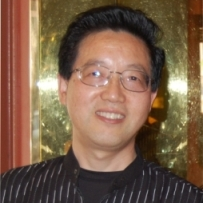Protein Phosphorylation and Cell Signaling
A special issue of Cells (ISSN 2073-4409). This special issue belongs to the section "Cell Signaling".
Deadline for manuscript submissions: closed (31 December 2020) | Viewed by 33554
Special Issue Editor
Interests: receptor tyrosine kinases; EGFR; signal transduction; cancer therapy; breast cancer treatment; targeted therapy
Special Issues, Collections and Topics in MDPI journals
Special Issue Information
Dear Colleagues,
Phosphorylation is one of the most important and most commonly occurring posttranslational modifications of proteins. Protein phosphorylation plays a critical role in cell signaling in response to extracellular stimulus and is of fundamental importance in biological regulation.
Protein phosphorylation is controlled by protein kinases and protein phosphatases. A protein kinase is a kinase enzyme that modifies other molecules, mostly proteins, by chemically adding phosphate groups to them (phosphorylation). The human genome contains about 518 protein kinase genes, and they constitute about 2% of all human genes. A protein could be phosphorylated in three amino acids, including tyrosine (Tyr, Y), Serine (Ser, S), and Threonine (Thr, T). A protein phosphatase is a phosphatase enzyme that removes a phosphate group from the phosphorylated amino acid residue of its substrate protein. While there are 107 genes in the human genome that encode protein tyrosine phosphatase, there are only a few serine/threonine phosphatases.
Up to 30% of all human proteins may be modified by protein kinase and phosphatase. Phosphorylation and de-phosphorylation commonly act as a switch to turn on and off a signaling cascade. Protein phosphorylation usually results in a functional change of the target protein (substrate) by changing enzyme activity, cellular location, or association with other proteins, which frequently lead to the changes in the biological function of the cell.
This Special Issue will cover the recent progress in all of the areas related to protein phosphorylation and cell signaling. Both original research articles and reviews are welcome.
Prof. Zhixiang Wang
Guest Editor
Manuscript Submission Information
Manuscripts should be submitted online at www.mdpi.com by registering and logging in to this website. Once you are registered, click here to go to the submission form. Manuscripts can be submitted until the deadline. All submissions that pass pre-check are peer-reviewed. Accepted papers will be published continuously in the journal (as soon as accepted) and will be listed together on the special issue website. Research articles, review articles as well as short communications are invited. For planned papers, a title and short abstract (about 100 words) can be sent to the Editorial Office for announcement on this website.
Submitted manuscripts should not have been published previously, nor be under consideration for publication elsewhere (except conference proceedings papers). All manuscripts are thoroughly refereed through a single-blind peer-review process. A guide for authors and other relevant information for submission of manuscripts is available on the Instructions for Authors page. Cells is an international peer-reviewed open access semimonthly journal published by MDPI.
Please visit the Instructions for Authors page before submitting a manuscript. The Article Processing Charge (APC) for publication in this open access journal is 2700 CHF (Swiss Francs). Submitted papers should be well formatted and use good English. Authors may use MDPI's English editing service prior to publication or during author revisions.
Keywords
- protein phosphorylation
- proein de-phosphorylation
- protein kinases
- protein phosphatases
- tyrosine kinases
- receptor tyrosine kinases
- serine/threonin kinases
- tyrosine phosphatases
- serine/threonin phosphatases
- extracellular stimulus
- cell signaling
- signal transduction
- structures
- functions






